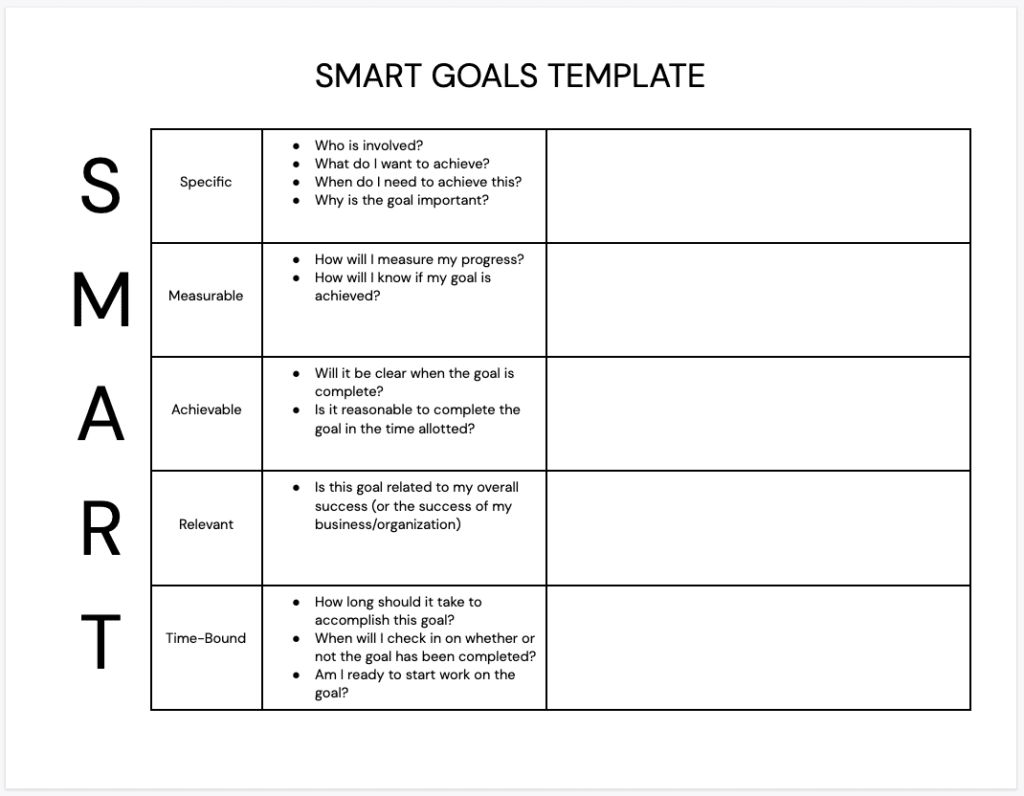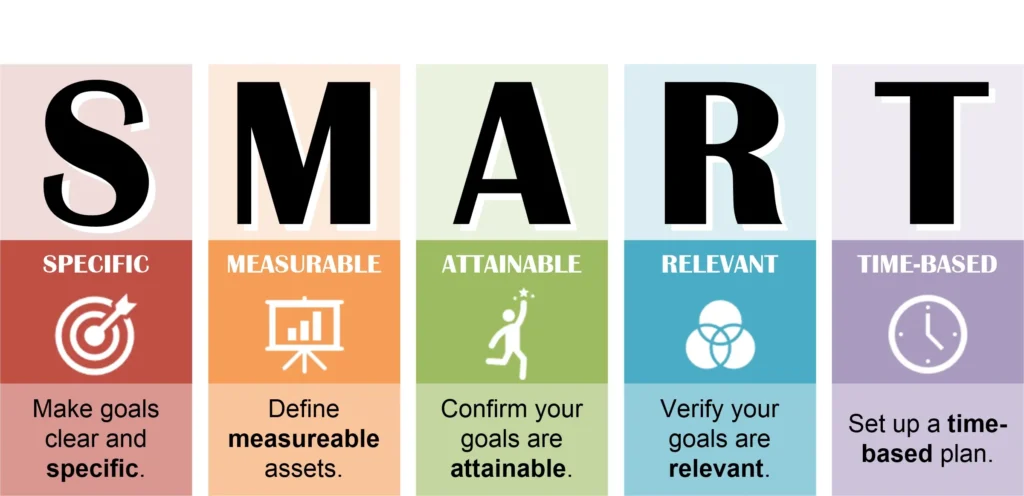A new year comes with exciting possibilities and endless goal setting ideas. But, it can be really overwhelming. Ever since I was a child, I remember thinking “new year, new start!” But I wasn’t exactly sure what that meant. I used to think that quantity was the most important thing so I added everything I could possibly think of to my list. From read more books, to eat salad, to limit tv time, I thought that adding a lot to my list meant that I would have a fresh start. Little did I know that because I was putting so many items on my list, I was not able to fully focus on one. AND, the goals were not specific so I had no way to evaluate progress.
I quickly learned that my resolutions became a game of crossing things off and checklists left untouched. I felt defeated and deflated by mid-January each year when I couldn’t keep up and felt like I failed.
It wasn’t until recently that I learned about SMART goal setting. And it has CHANGED.MY.LIFE.
I am going to walk you through the SMART framework in a way that I have learned to appreciate it, but there are hundreds (if not thousands) of resources available on the internet if you want to learn more. This is not just for resolutions, this is for any type of goal that you have in mind.
SMART Explained
SMART is an acronym that stands for: Specific, Measurable, Attainable, Relevant, Timely. Each time you have a goal, you use this method to break down the goal into manageable pieces.
Here is a template that I frequently refer to narrow it down.

I am going to use an example of a recent goal that I had and what I did to make it SMART.
Original goal: I want to walk more.
Based on the framework above, here is my SMART goal
I will walk for 30 minutes at least 4 days a week.
I changed “I want” to “I will”. I included specific frequency and duration. Just by adding a few words to the goal, it gives it meaning and purpose.
Specific: I am the only person involved in this. It is my responsibility to hold myself accountable. To achieve this, I need to dedicate 30 minutes at least 4 days a week. I will do this by marking off my calendar and scheduling it as “a meeting” to make sure it is not skipped. This is important to me for my mental health, physical health, and overall well being.
Measurable: I will measure my progress by documenting my walks in my calendar. I will start with one week at a time so it does not become overwhelming. It will go from Mondays-Sundays. I will not get discouraged if I miss a day, but will use it as a growing opportunity. I will know if my goal is achieved if I successfully complete 4 walks during the week time frame.
Attainable: It will be clear when the goal is complete as I will have documentation of this. It is reasonable to complete the goal in the time allotted especially because I can schedule the time needed to complete this.
Relevant: This goal is directly related to my overall success and mental mindset. It is relevant in today’s world with exercise being at the forefront of health.
Time-Bound: It should take 1 week increments to achieve this goal. Each week, I will then look ahead at the next week and plan out my walks. I am ready to start work on the goal.

Here are a few things to note as you get started:
- Pick ONE goal and stick with it. It takes 21 days to create a habit so stick with it!
- Share your success with those who are your fans.
- And most importantly, be proud of you accomplishments!
Good luck and looking forward to hearing how the start of your 2023 goes!
Have you used SMART goal setting? Do you have a great resolution? We would LOVE to hear about it!
Live.Laugh.Learn,
Jenn

